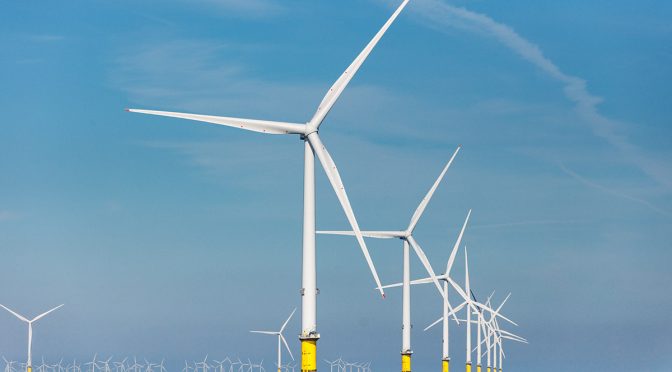As the country reels from continuous power cuts, the South African Wind Energy Association (SAWEA) has come out in support of feasibility studies into offshore wind energy, saying this could solve SA’s energy woes.
Reacting to recent research on offshore wind energy by Stellenbosch University academics, SAWEA says although SA is still far from developing this source of energy, further investigation into its viability must be pursued now.
Offshore wind power or offshore wind energy is the use of wind farms constructed in bodies of water, usually in the ocean, to harvest wind energy to generate electricity.
The Stellenbosch study: Offshore wind energy – South Africa’s untapped resource, acknowledges that tapping the energy-generating potential of SA waters is crucial if the country is to overcome the energy crisis.
The study says offshore wind energy could potentially help resolve the ongoing energy crisis, which has seen Eskom implement revolving power cuts.
Africa’s most advanced economy is experiencing the most severe power cuts in more than a decade.
Yesterday, the power utility announced stage two load-shedding, which will be implemented until Friday, saying this was a result of the loss of generation capacity and it also wants to replenish emergency generation reserves.
Commenting on the potential of offshore wind energy to alleviate the situation, Ntombifuthi Ntuli, CEO of SAWEA, says: “The wind market in South Africa is currently focused on onshore wind, because we have the land space available and it’s cost-competitive, which means almost all of our members are developing onshore wind. Ntombifuthi Ntuli, SAWEA CEO.
“Although we don’t think we will see the first offshore development in the country until 2030, we think it’s an area worth investigating. Good wind sites will be taken up during the next decade as we build 14.4GW of wind power. This is a good prompt for investigation into offshore wind to begin now. We have seen an increased focus from academia on this topic and as an industry we support it and look forward to the outcomes.”
Researchers of the study, Gordon Rae and Dr Gareth Erfort from the Department of Mechanical and Mechatronic Engineering at Stellenbosch University, say SA still relies heavily on coal to generate electricity, but with an ageing fleet of coal-fired power plants, the country should perhaps start to tap into offshore wind energy resources to help address future electricity shortages.
“If we were to install wind turbines at different depths off the KwaZulu-Natal and Western Cape coast, they could potentially supply approximately 15% and 800% of South Africa’s annual electricity demand.”
The researchers say their assessment showed the most suitable regions for the development of offshore wind energy are Richards Bay (within the 10km coastline buffer and approximately 15km offshore south of Richard Bay), Durban (within the 10km buffer and approximately 25km offshore of KwaDukuza) and Struisbaai (within the 10km buffer zone and approximately 15km offshore).
“Our study revealed that South Africa has an annual offshore wind energy production potential of 44.52 terawatt hours (TWh) of electricity if wind turbines were to be installed in shallow waters (depths of less than 50m) and 2 387.08TWh with wind turbines in deeper waters (depths less than 1 000m).
“According to Eskom, a typical South African household uses about 30 kilowatt hours (KWh) per day or 10 950KWh per year, which means that 44.52TWh could technically power approximately four million average households annually. Similarly, 2 387.08TWh could power roughly 218 million average households per year.”
“Considering that South Africa’s annual electricity consumption is approximately 297.8TWh, our calculations show the estimated annual energy production (AEP) available through 44.52TWh could theoretically meet 14.9% of our national electricity demand. Similarly, the estimated AEP available through 2 387.08TWh could theoretically satisfy the country’s annual electricity demand eight times over.”
This, the researchers say, creates an opportunity for a transition to offshore wind technology which is a clean electricity generation alternative that presents great power security and decarbonisation opportunity for SA.
Samuel Mungadze, itweb.co.za


